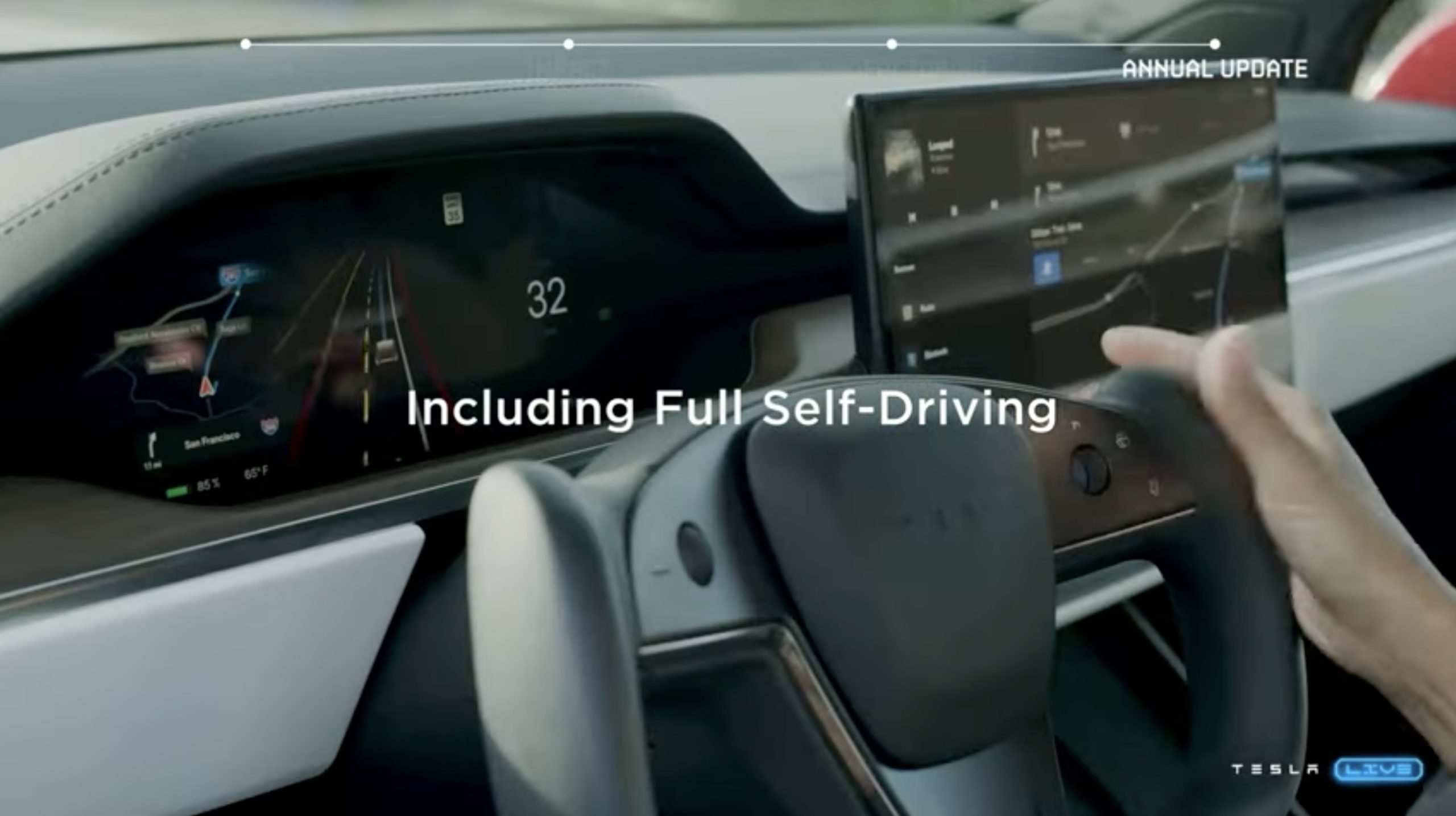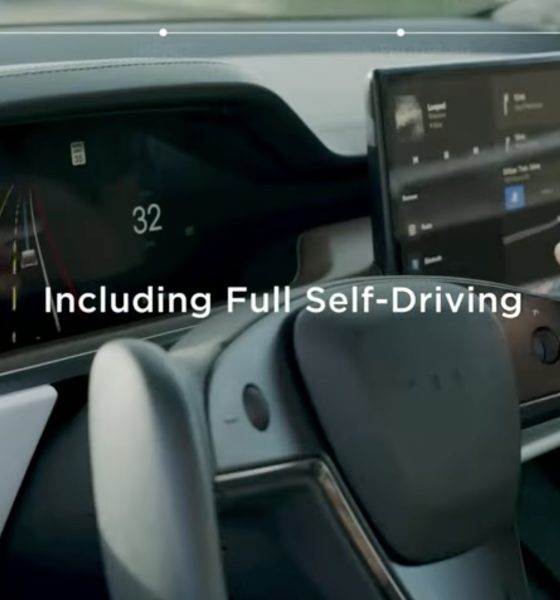It has been several weeks since Tesla kicked off the roll-out of its latest FSD Beta update, and a few Beta testers shared their thoughts on v10.69.2. FSD Beta testers told Teslarati that v10.69.2 made noticeable improvements to FSD, but a few issues have lingered from 10.69.1.
Tesla FSD Beta 10.69.2 Reviews
After talking to quite a few FSD Beta testers about 10.69.1, a pattern started to emerge. Testers mentioned similar issues repeatedly. The top three mentioned by testers were phantom braking, issues with turns, and speed limit recognition.
Lane selection issues seemed to be a prevalent one in FSD Beta 10.69.2. Multiple FSD Beta testers mentioned that their Tesla would take the turn lane on the road even if they intended to go straight.
“A major issue that I’ve had with this release has to do with lane selection. I find that sometimes, it’s going into an inappropriate lane. And sometimes it’s confused which lane to choose and bunks between a couple of lanes,” noted Dr. Sultan Rahaman, M.D.
“On one occasion, it was moving from the right lane into a right-turn-only lane. A lane that was going into a plaza that was just a right only. But it was driving down that lane at normal speed as if it believed that this lane was going straight through, and it was not, it was just a right turn lane. So I had to disengage because it seemed like it was identifying that right turn lane as just a regular lane going straight,” said Dr. Rahaman.
Long-time Tesla FSD Beta tester Les also experienced issues with lane selection and turns with v10.69.2.
“After multiple test loops and drives, there’s really just one main problem remaining for me at this point on 10.69.2, it’s significant, and that is lane selection,” noted Les.
Les also pointed out two other issues with FSD Beta 10.69.2: multilane turns and opposing turns in close succession. He noted that midterm, his car crosses lanes on 50% of attempts.
Les also stated that his car was successful 50% of the time when taking succeeding turns in opposite directions. “If I have a right turn followed by a left (or vice versa), within a space of a half a block or less, the car at this point fails to get over in time or oddly moves in the opposite direction,” he noted.
Dr. Rahaman also mentioned some issues with turns. He noted seeing improvements with left turns, but he also highlighted that his vehicle would perform left turns a bit aggressively.
“There’s another left turn, however, that’s a simple left turn from just crossing two lanes of traffic into my community—which is an unprotected left turn. I don’t like how it does that. I find that it gets very close to the incoming traffic, and at one point, it seems like it was just hesitating. I think I had to disengage because it seemed like it was moving forward, and traffic was coming,” Dr. Rahaman noted.
Tesla FSD Beta 10.69.2.2 Reviews
Tesla FSD Beta 10.69.2.2 is currently rolling out to more drivers. Plans are underway to roll out FSD Beta 10.69.2.3 shortly after AI Day 2 next week.
Les told Teslarati that there wasn’t any notable changes between 10.69.2, though there were still issues with lane selection. “If this lane selection problem can be solved, it will feel like a good step improvement for me,” he said.
Beta tester Neeraj noted that FSD maintains the posted speed limit even during inclement weather, like while it’s raining, and at night or on curvy roads. He noted that it gets a little unnerving when FSD does not slow down during those appropriate times. Neeraj also noted that his vehicle took long to turn in areas with no traffic lights.
Beta tester Howard also mentioned having trouble with turns since 10.69.2. “Turns at lights and stop signs way, way worse than 69.0!!!! Unusable in my area. Two times it almost caused an accident, once by stuttering and once by entering the opposing lane! Both times there was light traffic, 90-degree turn, good center, and fog lines, two lane road intersection another two lane road,” Howard told Teslarati.
FSD Beta 10.69.2 and 10.69.2.2 Verdict
Overall, testers seem impressed with v10.69 updates thus far. Most of the testers who spoke with Teslarati highlighted that v10.69 significantly improved FSD Beta. A lot of the beta testers stated that they drive more confidently through residential streets after FSD Beta 10.69.
However, a few did note that FSD might not be ready for a wider release by the end of the year. The main reason they believe FSD Beta isn’t ready for more drivers is because it still needs to be well-monitored.
“I still have to be cautious though. I would not want it in the hands of individuals who will not be alert and ready to take control at a moment’s notice,” one beta tester noted.
Have you tried out FSD Beta 10.69.2.2? I’d like to hear from you! Contact me at maria@teslarati.com or via Twitter @Writer_01001101.

Elon Musk
Starlink passes 9 million active customers just weeks after hitting 8 million
The milestone highlights the accelerating growth of Starlink, which has now been adding over 20,000 new users per day.

SpaceX’s Starlink satellite internet service has continued its rapid global expansion, surpassing 9 million active customers just weeks after crossing the 8 million mark.
The milestone highlights the accelerating growth of Starlink, which has now been adding over 20,000 new users per day.
9 million customers
In a post on X, SpaceX stated that Starlink now serves over 9 million active users across 155 countries, territories, and markets. The company reached 8 million customers in early November, meaning it added roughly 1 million subscribers in under seven weeks, or about 21,275 new users on average per day.
“Starlink is connecting more than 9M active customers with high-speed internet across 155 countries, territories, and many other markets,” Starlink wrote in a post on its official X account. SpaceX President Gwynne Shotwell also celebrated the milestone on X. “A huge thank you to all of our customers and congrats to the Starlink team for such an incredible product,” she wrote.
That growth rate reflects both rising demand for broadband in underserved regions and Starlink’s expanding satellite constellation, which now includes more than 9,000 low-Earth-orbit satellites designed to deliver high-speed, low-latency internet worldwide.
Starlink’s momentum
Starlink’s momentum has been building up. SpaceX reported 4.6 million Starlink customers in December 2024, followed by 7 million by August 2025, and 8 million customers in November. Independent data also suggests Starlink usage is rising sharply, with Cloudflare reporting that global web traffic from Starlink users more than doubled in 2025, as noted in an Insider report.
Starlink’s momentum is increasingly tied to SpaceX’s broader financial outlook. Elon Musk has said the satellite network is “by far” the company’s largest revenue driver, and reports suggest SpaceX may be positioning itself for an initial public offering as soon as next year, with valuations estimated as high as $1.5 trillion. Musk has also suggested in the past that Starlink could have its own IPO in the future.
News
NVIDIA Director of Robotics: Tesla FSD v14 is the first AI to pass the “Physical Turing Test”
After testing FSD v14, Fan stated that his experience with FSD felt magical at first, but it soon started to feel like a routine.

NVIDIA Director of Robotics Jim Fan has praised Tesla’s Full Self-Driving (Supervised) v14 as the first AI to pass what he described as a “Physical Turing Test.”
After testing FSD v14, Fan stated that his experience with FSD felt magical at first, but it soon started to feel like a routine. And just like smartphones today, removing it now would “actively hurt.”
Jim Fan’s hands-on FSD v14 impressions
Fan, a leading researcher in embodied AI who is currently solving Physical AI at NVIDIA and spearheading the company’s Project GR00T initiative, noted that he actually was late to the Tesla game. He was, however, one of the first to try out FSD v14.
“I was very late to own a Tesla but among the earliest to try out FSD v14. It’s perhaps the first time I experience an AI that passes the Physical Turing Test: after a long day at work, you press a button, lay back, and couldn’t tell if a neural net or a human drove you home,” Fan wrote in a post on X.
Fan added: “Despite knowing exactly how robot learning works, I still find it magical watching the steering wheel turn by itself. First it feels surreal, next it becomes routine. Then, like the smartphone, taking it away actively hurts. This is how humanity gets rewired and glued to god-like technologies.”
The Physical Turing Test
The original Turing Test was conceived by Alan Turing in 1950, and it was aimed at determining if a machine could exhibit behavior that is equivalent to or indistinguishable from a human. By focusing on text-based conversations, the original Turing Test set a high bar for natural language processing and machine learning.
This test has been passed by today’s large language models. However, the capability to converse in a humanlike manner is a completely different challenge from performing real-world problem-solving or physical interactions. Thus, Fan introduced the Physical Turing Test, which challenges AI systems to demonstrate intelligence through physical actions.
Based on Fan’s comments, Tesla has demonstrated these intelligent physical actions with FSD v14. Elon Musk agreed with the NVIDIA executive, stating in a post on X that with FSD v14, “you can sense the sentience maturing.” Musk also praised Tesla AI, calling it the best “real-world AI” today.
News
Tesla AI team burns the Christmas midnight oil by releasing FSD v14.2.2.1
The update was released just a day after FSD v14.2.2 started rolling out to customers.

Tesla is burning the midnight oil this Christmas, with the Tesla AI team quietly rolling out Full Self-Driving (Supervised) v14.2.2.1 just a day after FSD v14.2.2 started rolling out to customers.
Tesla owner shares insights on FSD v14.2.2.1
Longtime Tesla owner and FSD tester @BLKMDL3 shared some insights following several drives with FSD v14.2.2.1 in rainy Los Angeles conditions with standing water and faded lane lines. He reported zero steering hesitation or stutter, confident lane changes, and maneuvers executed with precision that evoked the performance of Tesla’s driverless Robotaxis in Austin.
Parking performance impressed, with most spots nailed perfectly, including tight, sharp turns, in single attempts without shaky steering. One minor offset happened only due to another vehicle that was parked over the line, which FSD accommodated by a few extra inches. In rain that typically erases road markings, FSD visualized lanes and turn lines better than humans, positioning itself flawlessly when entering new streets as well.
“Took it up a dark, wet, and twisty canyon road up and down the hill tonight and it went very well as to be expected. Stayed centered in the lane, kept speed well and gives a confidence inspiring steering feel where it handles these curvy roads better than the majority of human drivers,” the Tesla owner wrote in a post on X.
Tesla’s FSD v14.2.2 update
Just a day before FSD v14.2.2.1’s release, Tesla rolled out FSD v14.2.2, which was focused on smoother real-world performance, better obstacle awareness, and precise end-of-trip routing. According to the update’s release notes, FSD v14.2.2 upgrades the vision encoder neural network with higher resolution features, enhancing detection of emergency vehicles, road obstacles, and human gestures.
New Arrival Options also allowed users to select preferred drop-off styles, such as Parking Lot, Street, Driveway, Parking Garage, or Curbside, with the navigation pin automatically adjusting to the ideal spot. Other refinements include pulling over for emergency vehicles, real-time vision-based detours for blocked roads, improved gate and debris handling, and Speed Profiles for customized driving styles.










